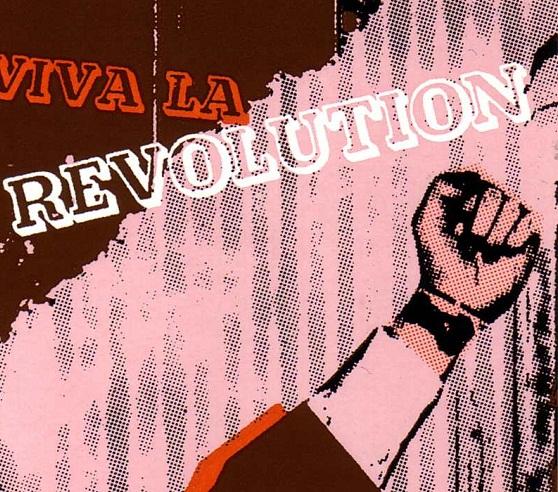Strategy
Confirmit: Talking about a CX revolution
Customer experience management vendor outlines three phases of a CX program

Customer experience evolution is much like the career of UK iconic pop band, the Beatles: You need to iterate and adapt if you're to keep up to date.
That's the view of Confirmit senior vice-president CX, Clare Sporton, who challenged brands at the vendor's recent Sydney event to embrace evolution and revolution through a holistic CX program transformation.
Just as the famed English band had several iterations, Sporton explained there are three eras in customer experience (CX) programs. The first is setting up a CX program.
“In this era, we see some fantastic results and good, quick wins making a big difference to our organisations,” she told attendees. “But unfortunately, these programs start to plateau and potentially might even start to decrease. It’s at this point we need to get that push and make sure we have an evolution into the next era of our program, which is around having that wider perspective and driving real business impact into our organisation.”
Sporton then explained the final third era is about getting into a cultural situation where our programs are leaving that lasting legacy.
“So we, as CX practitioners, don’t have to get behind everyone with a big sharp stick,” she said.
Getting established
Providing more detail, Sporton said the first era consists of getting the basic rights with a CX program and driving value to the organisation by both delivering ROI on the CX initiative, as well as building cultural value through creating change.
“How do we evolve through this period? Just like the Beatles we need to get the line-up right," she said. "This is about understanding what we’re aiming to achieve and linking that fundamentally to business outcomes.”
This doesn't mean simply identifying outcomes, such as improving the response rate from ads. Instead, it's about understanding the overarching goal, which is important to understanding the ‘why’ of what organisations are doing. Sporton stressed the importance of having programs harmonised with business plans.
“If we are not aligned to our business strategy, we’re going to really struggle from a CX perspective,” she said.
Organisations can face many challenges as they evolve through this process of evolution with their CX programs, Sporton agreed. A big one is making connections between the enterprise data silos.
“We need to link data sources, map the data together... to make sense of the data,” she explained. “Our customers aren’t simple and our programs need to be able to be complex to map all the data points.”
However, Sporton said it’s not enough just to focus on customers because there are huge insights from understand internal teams. It’s a matter of bringing all the data sources together for maximum insights into how your organisation is responding to customers’ needs.
Wider perspective
Just as the Beatles overhauled their look and sound, at some point an organisation will need to have its own revolution in its CX approach, Sporton continued. Sometimes it's competitors who change what they’re doing and change customer perceptions.
“What is the indicator from a CX perspective that we’ve gone through as much evolution as we can and it’s time for a revolution?” she asked. “If you keep producing the same report, the numbers stay the same, maybe you need to make a step-change.”
Another giveaway if running out of quick wins, or if the same issues are reappearing. Ultimately, era two is about making smarter decisions across the whole organisation, Sporton said.
“It’s not about AI [artificial intelligence] making decisions, it’s about human beings taking ownership of making decisions,” she said.
Sporton emphasis the importance of customer-centric decision making in this era. “First step is getting people to understand they need to make a decision. Help them understand they’ve got to do something differently.”
Data also needs to be richer, for example, than volume and sentiment. “It needs to be linked to analytics and to key drivers to understand what people are talking about and how important it is for the business outcome the organisation is looking to drive,” Sporton said.
The legacy
Sporton's third era requires another revolution when the program is tired. The goal here is to make a lasting legacy of CX.
To do the CX teams need to start governing rather than leading and moving the decision-making away from senior leaders to closer close to those on the frontline who know what needs to happen and who are responsible for making it happen, she said.
“This is about a values-based organisation. Everybody wants to be one, but the way we drive a values-based organisation is by changing behaviours,” Sporton said. “And the CX team are core to measuring and monitoring that change in behaviour. That's a huge legacy for our CX programs. And we find the team will keep it going just naturally.”
It's important data in the smart hub is available to help identify when decisions are needed, as well as to assist to plan actions.
“We need to make links between those decisions and how they are impacting the outcomes and the final link with ROI,” Sporton added. “The lasting legacy is to empower our teams to make better decisions and drive those better business outcomes. We do that by bringing together those richer insights and driving people to make smarter decisions and make sure we get that action in place.”
Follow CMO on Twitter: @CMOAustralia, take part in the CMO conversation on LinkedIn: CMO ANZ, follow our regular updates via CMO Australia's Linkedin company page, or join us on Facebook: https://www.facebook.com/CMOAustralia.




